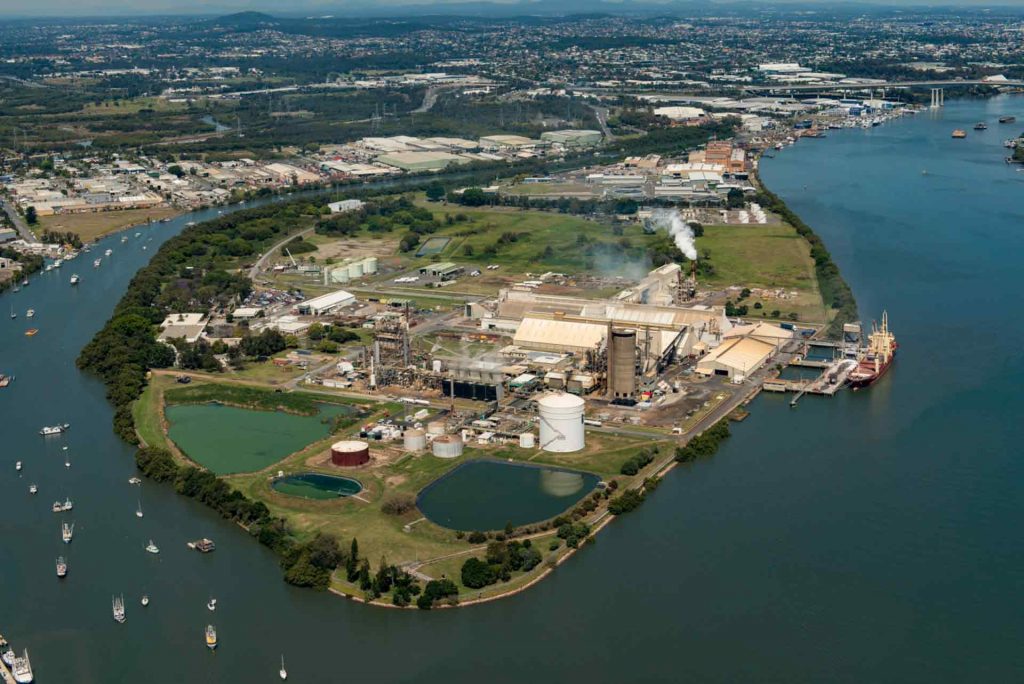Fortescue plans massive hydrogen electrolyser in Brisbane
The proposed 500 MW electrolyser would be capable of producing 70,000 tonnes of renewable hydrogen each year to help decarbonise ammonia.

Plans are afoot to build one of the world’s largest, renewable energy powered electrolysers in Queensland.
The proposed 500 MW plant on Brisbane’s Gibson Island would be capable of producing 70,000 tonnes of renewable hydrogen each year.
Gibson Island is already home to an ammonia plant, which uses hydrogen as a key ingredient in its production.
ARENA is providing a grant of $13.7 million towards a $38 million front-end engineering and design (FEED) study. ARENA’s funding will go to Fortescue Future Industries Pty Ltd (FFI) in consortium with Incitec Pivot Limited (IPL) to support the FEED study.
The study will examine the development of the electrolyser and potential integration into the ammonia plant.
The project will be entirely powered by renewable energy through a PPA as part of the FEED study.
If built, the Gibson Island facility in Brisbane’s Brisbane River would constitute one of the world’s largest electrolysers. It would also be the world’s first fully decarbonised renewable ammonia plant.
ARENA CEO Darren Miller described the project as “exciting” for the parties involved and for Australia.
“Having the ability to reutilise ageing assets and repurposing them to use renewable energy will not only help to keep costs down in the future, but also ensure skilled workers are retained as we continue our transition to net zero emissions,” Mr Miller said.
ARENA only recently announced $47.5 million in conditional funding to ENGIE to build a 10 MW electrolyser in Karratha, WA. The renewable hydrogen it produces will feed into Yara Pilbara Fertiliser’s ammonia facility.
Why ammonia?
So, what makes the pairing of hydrogen and ammonia production such an attractive emissions target?
Hydrogen has many industrial applications in processes such as oil refining and steel making. But ammonia production is by far the biggest single consumer, using around 50 per cent of global hydrogen production.
Ammonia itself also has many uses, including as a feedstock in the production of nitrogen fertilisers for farming.
But making ammonia releases around 500 million tonnes of CO2 emissions each year, or 1.8 per cent of global emissions.
A large part of that comes from the production of hydrogen in a process called steam methane reforming. Natural gas (methane), itself a highly potent greenhouse gas, reacts with high pressure steam to produce hydrogen plus CO2.
Electrolysers produce hydrogen by passing an electric current through water, which splits into its constituent molecular elements hydrogen and oxygen. If that electric current is supplied by renewable energy, the hydrogen is produced with zero emissions.
And if renewable hydrogen is fed into an ammonia plant, itself powered by renewable energy, the result is emissions-free ammonia. And, potentially, 500 million fewer tonnes of carbon emissions.
Exporting sunshine
Ammonia and its products are also much easier to transport and trade than hydrogen, So, renewable ammonia has the potential to open huge opportunities for Australia to, in effect, export its plentiful sunshine.
All those factors make hydrogen electrolysis and ammonia production plants ideal close neighbours.
Mr Miller said companies are now seeing future benefits from engagement with renewable hydrogen technology “[They] are looking to build even larger projects,” he said.
“Ultimately our goal is to reduce the costs of renewable hydrogen so that it can become … competitive with fossil fuels and we can scale up production and become a viable option for companies to decarbonise their industrial processes or further assist in the creation of a viable export industry.
ARENA has also previously committed $88 million to renewable hydrogen projects spanning feasibility studies, small scale electrolyser demonstrations, gas blending trials and vehicle deployments.
LIKE THIS STORY? SIGN UP TO OUR NEWSLETTER

ARENA